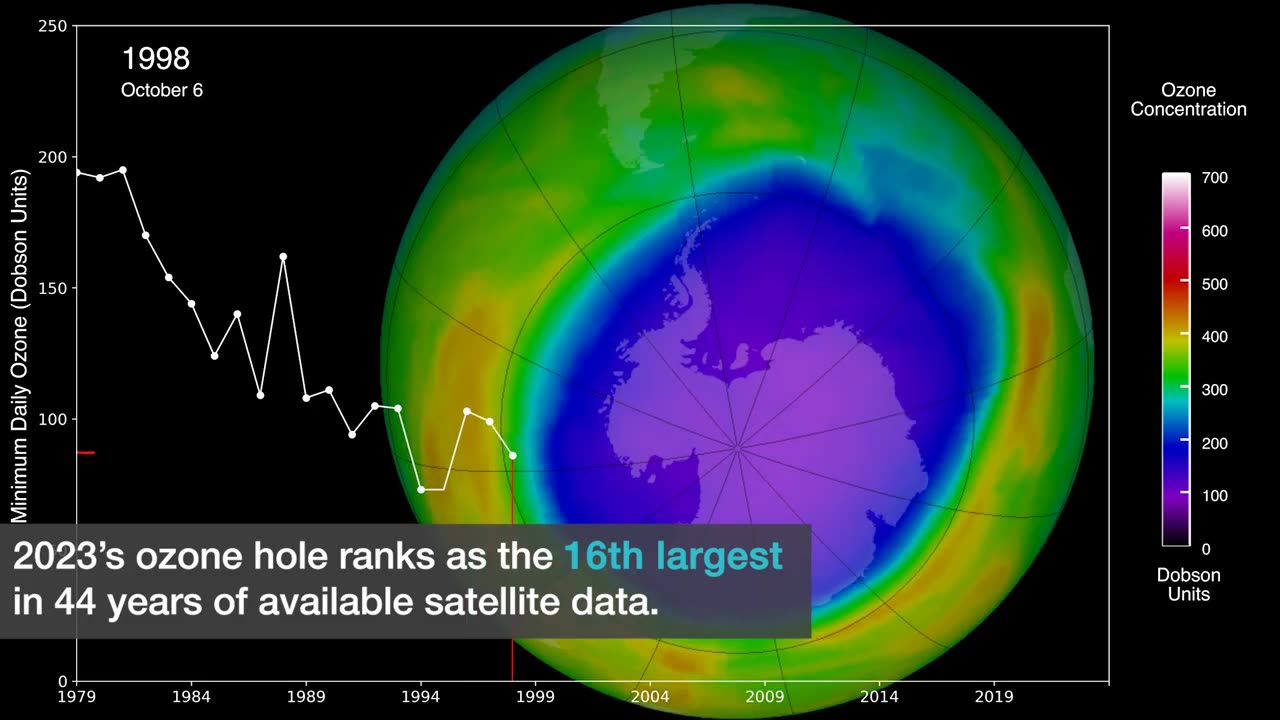Premium Only Content

2023 Ozone Hole Update
The 2023 Antarctic ozone hole reached its maximum size of 10 million square miles (26 million square kilometers) on September 21. This makes it the 16th largest ozone hole since 1979.
During the peak of the ozone depletion season, from September 7 to October 13, the hole averaged 8.9 million square miles (23.1 million square kilometers). This is approximately the size of North America.
This means that the ozone hole was larger than average during the 2023 ozone depletion season. However, it was not the largest ozone hole on record. The largest ozone hole occurred in 2000, when it reached a size of 11 million square miles (28.4 million square kilometers).
Despite the global ban on ozone-depleting chemicals, the ozone hole persists due to the long atmospheric lifetimes of these chemicals. It is expected that the ozone hole will continue to shrink and eventually close in the coming decades, but it is important to continue monitoring and researching the ozone layer to ensure that this happens.
-
 12:19
12:19
Tundra Tactical
6 hours ago $2.69 earnedDaniel Penny Beats Charges in NYC Subway Killing
15.6K3 -
 29:53
29:53
MYLUNCHBREAK CHANNEL PAGE
1 day agoUnder The Necropolis - Pt 1
72.9K42 -
 2:00:10
2:00:10
Bare Knuckle Fighting Championship
3 days agoCountdown to BKFC on DAZN HOLLYWOOD & FREE LIVE FIGHTS!
36K3 -
 2:53:01
2:53:01
Jewels Jones Live ®
1 day agoA MAGA-NIFICENT YEAR | A Political Rendezvous - Ep. 103
71.4K21 -
 29:54
29:54
Michael Franzese
9 hours agoCan Trump accomplish everything he promised? Piers Morgan Article Breakdown
87.6K45 -
 2:08:19
2:08:19
Tactical Advisor
13 hours agoThe Vault Room Podcast 006 | Farwell 2024 New Plans for 2025
166K11 -
 34:12
34:12
inspirePlay
1 day ago $4.94 earned🏆 The Grid Championship 2024 – Cass Meyer vs. Kelly Rudney | Epic Battle for Long Drive Glory!
71K8 -
 17:50
17:50
BlackDiamondGunsandGear
11 hours ago $1.70 earnedTeach Me How to Build an AR-15
46.1K4 -
 9:11
9:11
Space Ice
1 day agoFatman - Greatest Santa Claus Fighting Hitmen Movie Of Mel Gibson's Career - Best Movie Ever
107K45 -
 42:38
42:38
Brewzle
1 day agoI Spent Too Much Money Bourbon Hunting In Kentucky
71.3K12